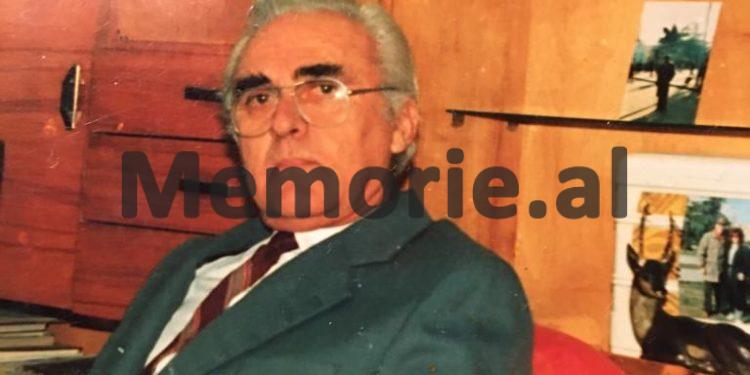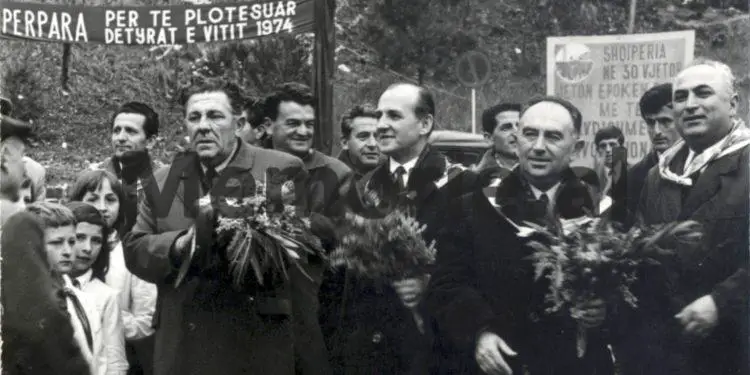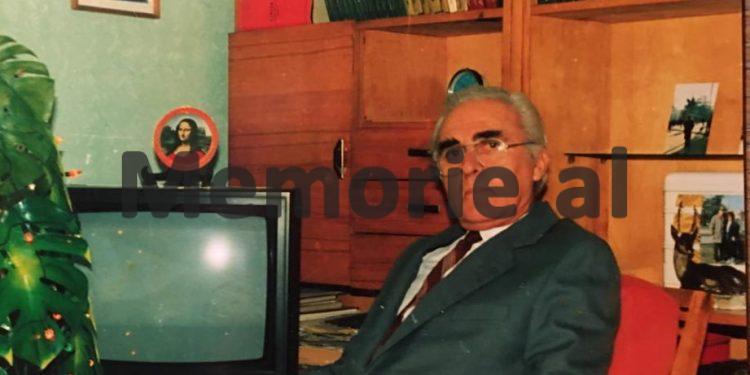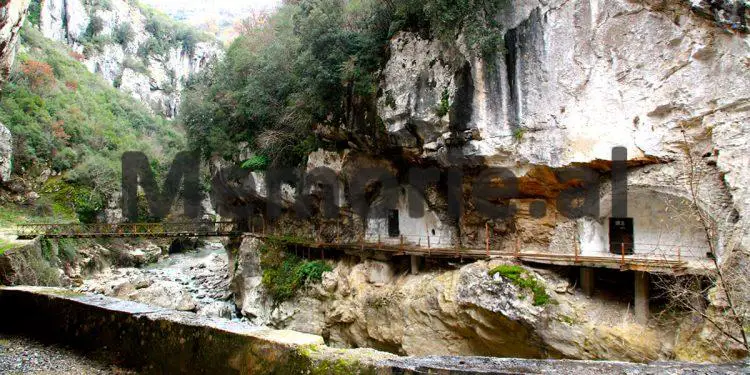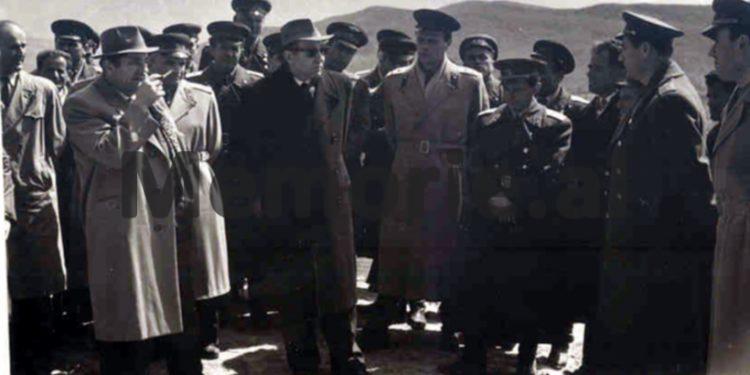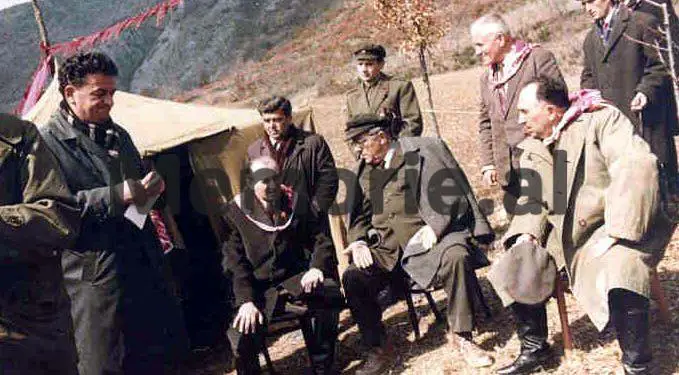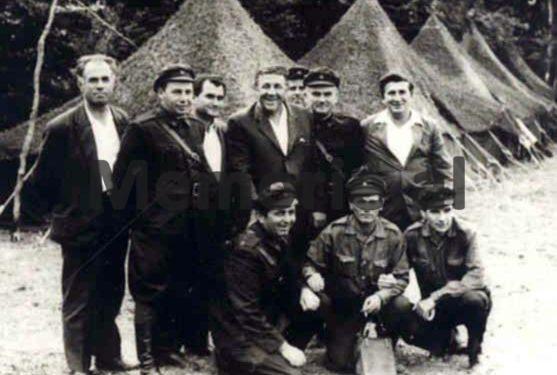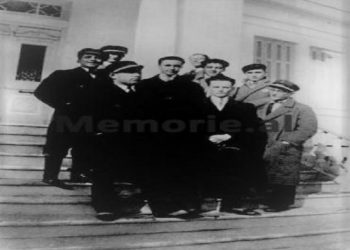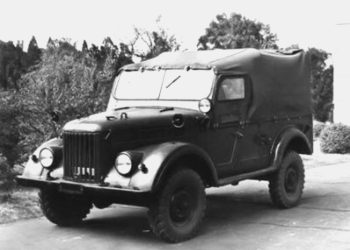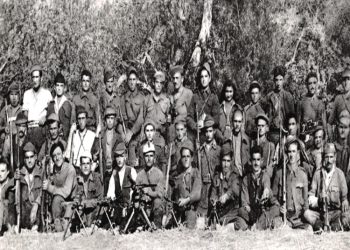Dashnor Kaloçi
Memorie.al/ publishes the story of Colonel Ahmet Mehmeti, a former senior military officer in the Ministry of Defense in the 1970s, regarding the construction of four secret villas on the outskirts of Skrapar, where Enver, Mehmet, would live in case of emergency. Shehu, Hysni Kapo and Beqir Balluku How were they built together with the secret tunnels of the treasury and the general command post and who were the senior military of the Ministry of Defense who were in charge of monitoring their work. The assessment given to Mehmet Shehu on the day of the inauguration….!?
Following the decisions taken by the Defense Council, the Minister of Defense, Beqir Balluku, and the Chief of General Staff, Petrit Dume, were in charge of their implementation, who also assigned a working group composed of Generals Vaskë Gjino and Mendu. Backa; by Colonels Josif Zegali and Kadri Brahimaj; as well as by me and Kristaq Qarri, who held the ranks of major. After the task was communicated to us, by Beqir Balluku and Petrit Dume, we as a working group went to the district of Skrapar and did the reconnaissance, or more precisely the recognition of the terrain, to determine and mark the exact place where the strategic facilities would be built. secrets, which at that time were considered of special importance”. This is how Ahmet Mehmeti, a former senior military officer at the General Staff at the Ministry of Defense, recalled at the time in the early 1960s, when he was assigned as a lead officer to monitor the implementation of some top-secret facilities to be built in the district. of Skrapar. But what were those objects, why was their construction decided in the Skrapar district and how were they evaluated, after the completion of the works, by Mehmet Shehu, who went himself for their inauguration? For all this, we know the exclusive testimony for Memorie.al of Colonel Ahmet Mehmeti, who in the mid-70s left the Ministry of Defense as undesirable.
Mr. Ahmet, when was the idea of building secret army tunnels for the first time, and specifically those of Skrapar, which after the ’90s were widely rumored in the media?
For the first time the idea for mass tunneling of the country was thrown in the early ‘60s, after the break-up of Albania with the Soviet Union, but it must be said that even before the army had built tunnels for the needs of the country’s defense. At that time, more precisely around 1961, the Defense Council decided to develop the expanded assets of the Army, which as the main topic would have the problems of the country’s defense, or in other words the review of those problems which were conditioned by the situation in which our country found itself after the breakdown of relations with the Soviet Union. This was decided in principle in the active one, as for its implementation the structures of the respective branches of the Ministry of Defense would be taken, where one of the cadres that was assigned to the South was me.
What measures were taken for the South of the country, where you were assigned?
In the decisions taken by the Defense Council, chaired by Enver Hoxha as Commander-in-Chief, the South was divided into two strategic directions. The first direction was that of the Elbasan-Korça area, which included the districts of Librazhd, Pogradec, Gramsh, Skrapar and Kolonja. In this strategic direction I was charged with the duty of leadership officer. While the second strategic direction, where Kristaq Qarri was assigned as the direction officer, included the territories of Ballsh, Berat, Përmet, Tepelena, Saranda and Gjirokastra districts. It was also decided that the command post of the General Staff of the Army, during the war, be built in the district of Skrapar, because in case of any possible aggression, which would come to us from Greece, from Skrapar would be directed and commanded to all the units of our army, which were installed in the South of the country.
Only for this was the construction of the headquarters of the General Staff in Skrapar decided?
The construction of the headquarters of the General Staff in the district of Skrapar had another purpose: If the territory of the country was partially occupied and switched to the maneuvered defense of the second degree, as during the War, Skrapar would constitute the neuralgic zone. from where the war against the invading enemy would be directed and led. For this reason, it was decided to build several other facilities in the Skrapar district, such as four villas, in which the main leaders of the Defense Council would be housed, together with their families: Enver Hoxha, Mehmet Shehu, Hysni Kapo and Beqir Balluku. So, in case of war they would be transferred from Tirana to Skrapar and would be settled in those villas to take over the running of the state.
Apart from the headquarters of the General Staff and the leadership villas, what were the other facilities that you said would be built in Skrapar?
Among the other facilities that the Defense Council decided to build in Skrapar was that of the state treasury, which, like the villas of the leadership and headquarters of the Headquarters, was a top-secret facility of special importance. For the construction of the state treasury tunnel, the Prime Minister Mehmet Shehu defined all the relevant tasks, how in case of war the treasury would be evaded from the State Bank in Tirana, to the Skrapar tunnel to the helicopter that will to sit on the terrace of the Bank in Tirana, to take the coffers with gold.
After making these decisions, who were the persons in charge of their implementation?
The Minister of Defense, Beqir Balluku, and the Chief of Staff, Petrit Dume, were in charge of their implementation, who also assigned a working group composed of Generals Vaskë Gjino and Mendu Backa; Colonels Josif Zegali and Kadri Brahimaj; as well as from me (Ahmet Hasan Mehmetaj) and Kristaq Qarri, who held the ranks of major. After the task was communicated to us by Beqir Balluku and Petrit Dume, we as a working group went to the Skrapar district and did the reconnaissance or more precisely the knowledge of the terrain, to determine and pinpoint the exact place where the top secret strategic facilities would be built, which were then considered of special importance.
Where was the construction of these secret facilities targeted and what measures were taken for their construction?
The Devria Neck was designated for the construction of the headquarters of the General Staff, while for the leadership villas and the state treasury tunnel it was decided that they be built on the outskirts of the town of Çorovoda, in a place called Guak. After marking the respective facilities, a series of measures were taken for their construction. One of the first things that was done was the partial reconstruction of the national road Berat-Skrapar, which continued to the village of Malind, as well as three other roads were opened, which in the military language are called tactical routes for maneuvering forces, which they connected Skrapar with neighboring districts. One of those roads passed through the village of Gjerba and from there came out to the village of Maliq in Korça. The construction of these roads was assigned to the Genoese regiment, while for the construction of the other three facilities I mentioned above (headquarters headquarters, four villas of senior leadership and the state treasury tunnel) many skilled engineers and specialists were made available… Apart from me, who was appointed as a management officer and I often went to see those objects, during their construction the highest leaders of the state and the army, such as Mehmet Shehu, Beqir Balluku, etc., came for inspection. Only Enver Hoxha never came to see them during the construction. After we finished building them, Mehmet Shehu, who came to see them himself, together with a large group of senior leaders of the state and the Army, thanked us for the work done and told us that soon as those objects we would build in the northeastern area of the country.
Were such facilities built in the northeast as well?
After the completion of these facilities in Skrapar, as we were with the working groups, Mehmeti took us all and together with him we went to the northeast of the country, in the area of Munella mountain, in the district of Puka. Along with us, Mehmeti took with him all the commanders of all units in northern Albania. We stayed there for a few days and made the relevant reconnaissance for the construction of the headquarters building of the General Staff, which would take over the state, in case our country would be threatened by any military aggression from the north. But that building remained only in the reconnaissance phase and was never built, for the course of events that followed later.
What about the facilities that were built in Skrapar, were they put into operation?
They all worked best until the early 1990s, when their demolition began. The headquarters of the General Staff in Qafën e Devrës conducted several large exercises, such as “Vjosa” or “Morava”, in which Mehmet Shehu himself participated, who with his cane in his foot stepped on the entire area where the facilities were.
What about the four villas built for senior leadership on the outskirts of the town of Çorovoda, were they ever used by them?
I do not know about this, but I can say that those villas functioned normally, at least until before the ’90s. Testimony of Colonel Mehmeti: After the break with the Russians, the army assets were urgently gathered in Durrës. Regarding the period when the idea for the mass tunneling of the army was first put forward, and what was discussed at the meeting of the Army assets, which took place at the Military Holiday Home on the beach of Durrës, Ahmet Mehmeti said: “After the demolition with The Soviet Union, in 1961, the senior leadership of the ALP and the Defense Council decided that the defense of the country relied entirely on our forces, as until then the defense of the country was also supported by Moscow, which was considered an ally. our largest. So, in short, after the breakdown of relations with the Soviet Union, the defense of the country would rely entirely on our forces, which resulted in the development of that activity of the Army, where, among other things, the construction of tunnels was decided. Skrapar. The extended activity of the Army took place in the Military Holiday Home, on the beach of Durrës, and was attended by the main leaders of the Army units, such as the Corps and Brigades and the main cadres of the apparatus of the Ministry of Defense. While from the senior leadership participated: Enver Hoxha, Prime Minister Mehmet Shehu, Secretary of the Central Committee of the ALP covering the Army Hysni Kapo, Minister of Defense Lieutenant General Beqir Balluku, and Chief of General Staff of the Army Major General Petrit Dume, who constituted the presidium of that very important meeting. The main speaker of that meeting was the Minister of Defense Beqir Balluku. Her topic was: Defending the homeland, duty upon duty. After that discussion, many other discussions took place, which were mainly in support of the speech of the Minister of Defense. There were debates of other discussants who took the floor, but they were quickly flattened with the intervention of Enver Hoxha, who said that everyone had to express their opinion freely, as all the main leaders of the Army units. After those debates, the active works continued normally and in the end, as the main point, it was decided: Construction of positional-active defense, combined with maneuverable defense, mainly on the coast, in the South of Albania and in the northeastern areas, which were areas most endangered by a possible military aggression.
“Skrapar facilities also withstood atomic shocks”
But how long did the works for the construction of Skrapar secret facilities last and what was the assessment given to them by the senior leadership? Regarding this, Ahmet Mehmeti testified: “The works for the construction of those secret facilities lasted less than a year, as a large number of specialized forces were organized there and no material was missing. Their construction was done with a very high quality and there, in the offices and working rooms and living room of the headquarters of the General Staff, none of the necessary elements of normal living were missing. Those objects were best disguised with trees and camouflage nets and were designed to withstand all enemy blows, both atomic and chemical. Likewise, the four villas for the highest leaders of the state were built with all the physical conditions, leaving nothing short of those of Dajti in Tirana, Pogradec, Vlora or Durrës, where they rested normally with their families. When the construction of the headquarters building of the General Staff in Qafën e Devrës, which was all underground, was completed, strong security measures were put in place to protect it with special bodyguards. There, near that facility, a unit commanded by the facility’s chief of defense, Sytki Korita, was set up. When the construction of the facilities was completed and they would be inaugurated, Mehmet Shehu came from the top leadership with Beqir Balluku and Petrit Dumen, as well as generals Mendu Backa, Vaskë Gjino, Tanush Shyti, Todi Naço and Kadri Brahimaj (colonel). All of them were accompanied by Colonel Dilaver Radeshi, whom Mehmeti always took with him to Skrapar, as well as the first secretary of the district Party Committee, Teki Malindi, and the chairman of the Executive Committee, Qetsor Kaltanji. Mehmeti trampled on all objects, from the headquarters headquarters, the treasury tunnel to the leadership villas, entering office after office and room after room. He really liked the quality of the construction of those facilities and said: “Congratulations, like these facilities we built here, we will soon build in the northeastern part of the country.” / Memorie.al




